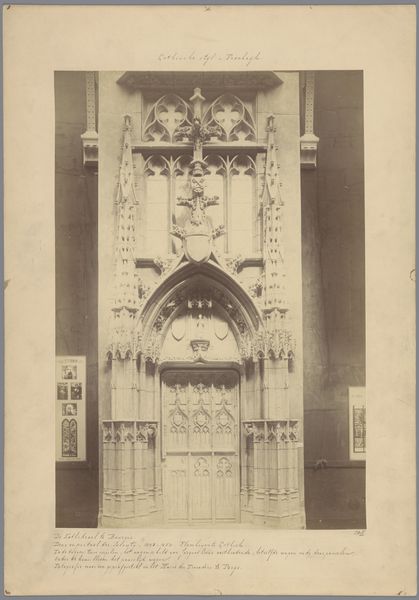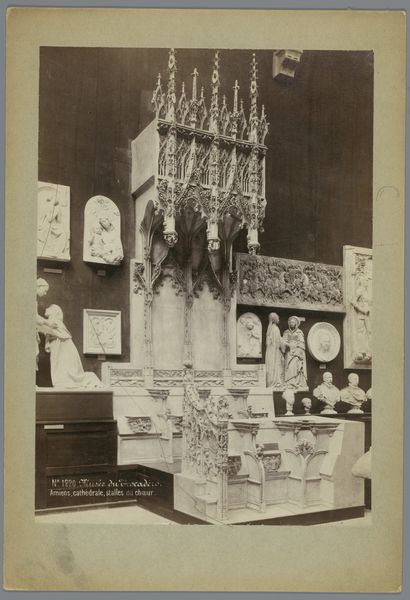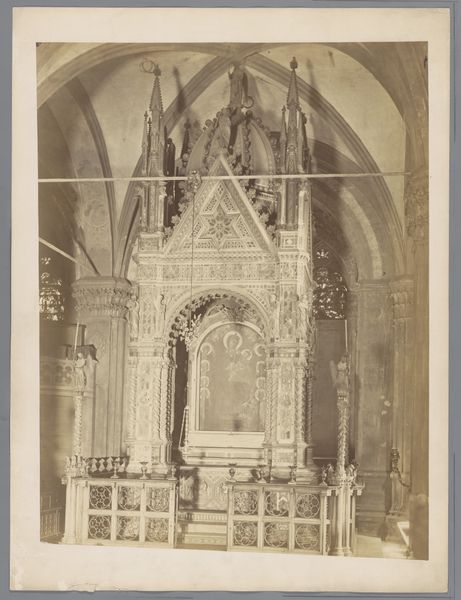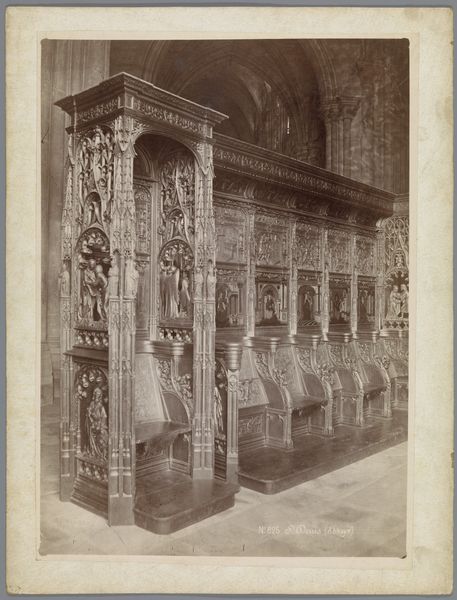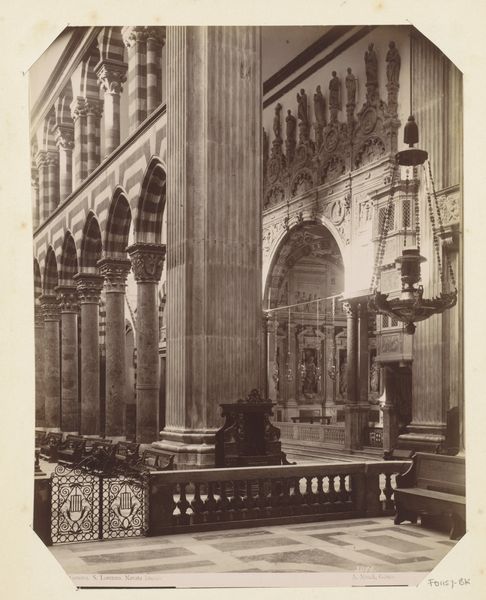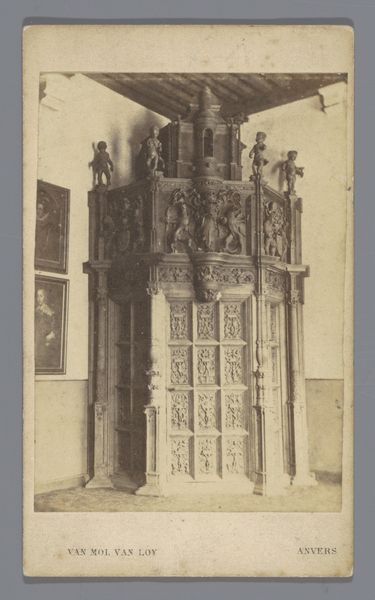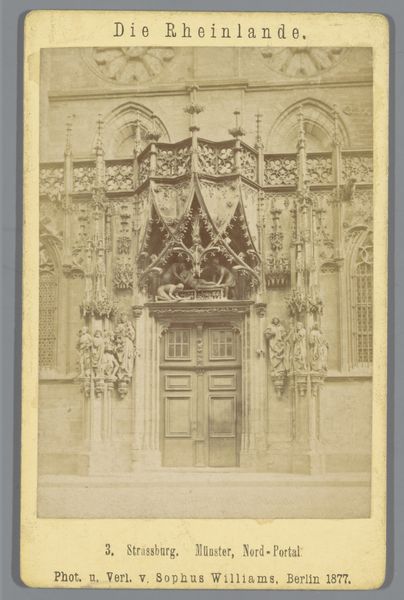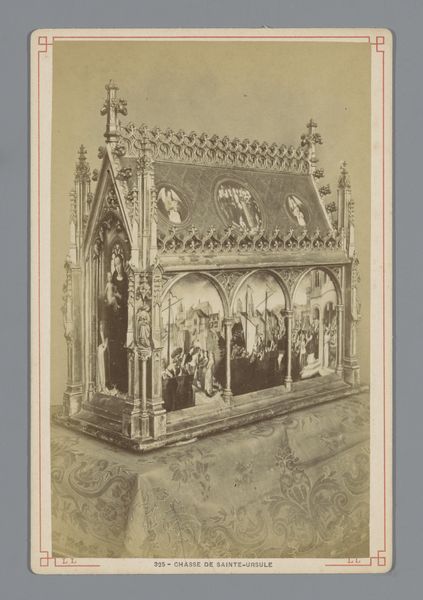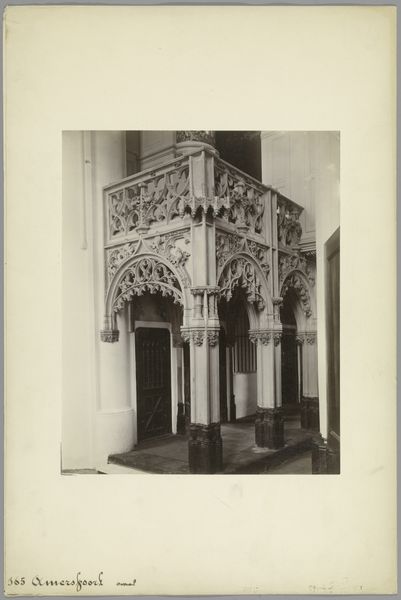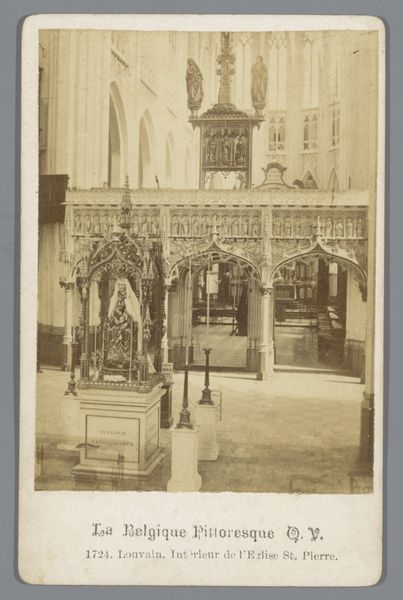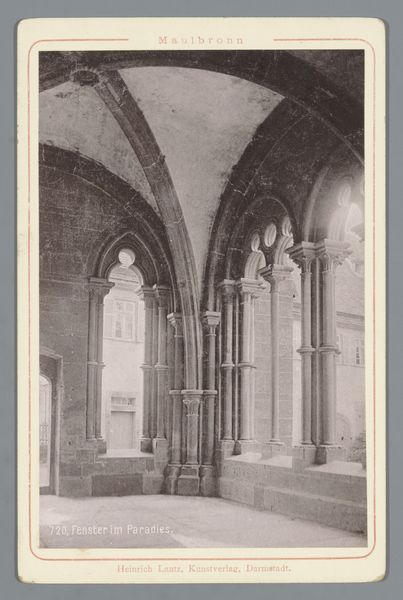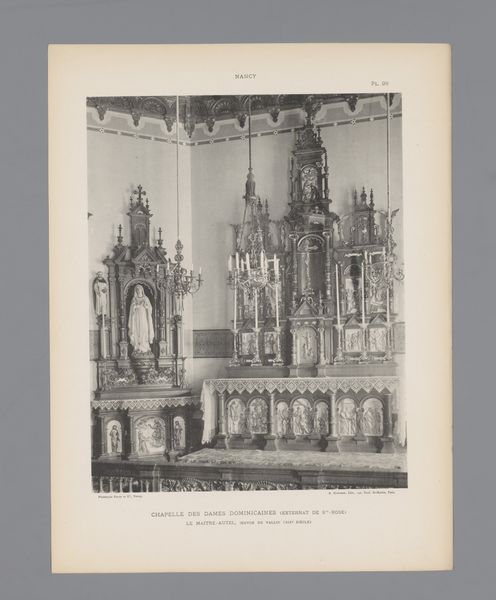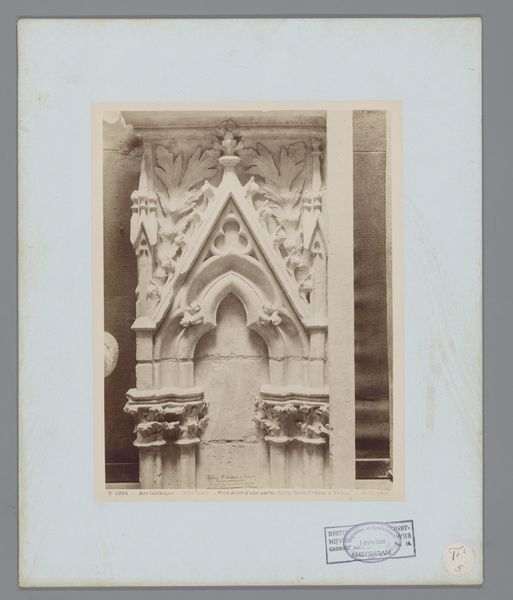
Dimensions: height 146 mm, width 97 mm
Copyright: Rijks Museum: Open Domain
Curator: We're looking at a gelatin silver print from around 1895-1900, simply titled "Sedilia in de Abdij van Maulbronn." It captures a Gothic-era sedilia—essentially, the seats for clergy—within the Maulbronn Monastery in Germany. The photographer remains anonymous. Editor: The mood is somber, almost reverential. It’s the play of light and shadow, and the detail of the carving. The structure looms with great verticality, softened by the slight blur of early photography. The eye is immediately drawn upward. Curator: Absolutely. The photographer chose to highlight the intricate Gothic details of the wooden structure, showcasing the craftsmanship inherent in its creation. Maulbronn itself holds immense significance; it's a remarkably preserved Cistercian monastery reflecting a monastic culture centered on simplicity and intellectual life. Editor: Yet there's a tension, isn't there? The austerity of monastic life versus the extreme visual opulence of the Gothic style. Was the sedilia about piety, or about asserting ecclesiastical power and visual rhetoric? Who was this visual opulence actually for? Curator: Precisely the type of questions we should consider. In that time period, visual display played a powerful role in conveying status and solidifying institutions. Remember, monasteries held not only spiritual authority but also substantial economic power. Editor: And that's where this photograph, even taken centuries later, gains weight for me. Photography democratized imagery somewhat. It allows for critical viewing – do we see simply architectural beauty, or do we see centuries of religious power dynamics frozen in a moment? It speaks to me about legacy and reinterpretation, inviting conversations on religious dominance across historical power structures. Curator: That’s insightful. Looking at the image itself, its purpose might be something simple – as documentary evidence of a historical structure, contributing to preservation, and perhaps tourist consumption. Editor: It's a testament to how even seemingly straightforward documentation can unlock complex dialogues. For me, it is not only a photograph of a thing, but the visual manifestation of intersecting histories. Curator: I agree completely. This seemingly simple architectural photograph embodies complexities beyond its surface, offering endless avenues to investigate questions of aesthetics, belief, power, and memory.
Comments
No comments
Be the first to comment and join the conversation on the ultimate creative platform.
